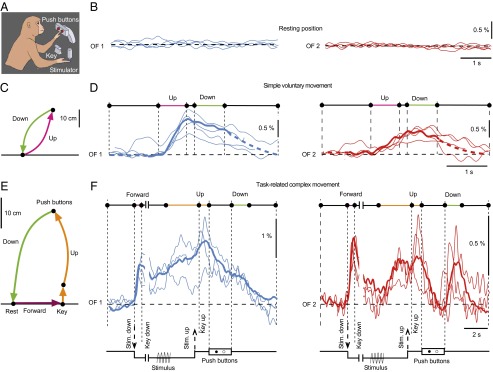Fig. 4.

Local domain-specific Ca2+ signals recorded during trained complex movements. (A) Schematic of the setup for the vibrotactile detection task (Materials and Methods). (B) Absence of Ca2+ signals, both in OF1 and OF2, in the absence of arm movements. (C) Trajectory of a simple voluntary movement of the left arm to push buttons (up) and back to the resting position (down). (D) Ca2+ signals corresponding to the movement indicated in C. Superimposed individual traces (four each) and the average traces (n = 7, thick lines) recorded simultaneously at two distinct sites in M1 with the optical fibers OF1 (blue) and OF2 (red). (E) Trajectory of a task-related complex movement of the left arm from rest to the key, then to the push buttons and then back to rest. (F) Ca2+ signals corresponding to the movement indicated in E. Superimposed individual traces (three each) and the average traces (n = 10, thick lines). The schemes at the bottom of the traces indicate the sequential steps of the behavioral task.
